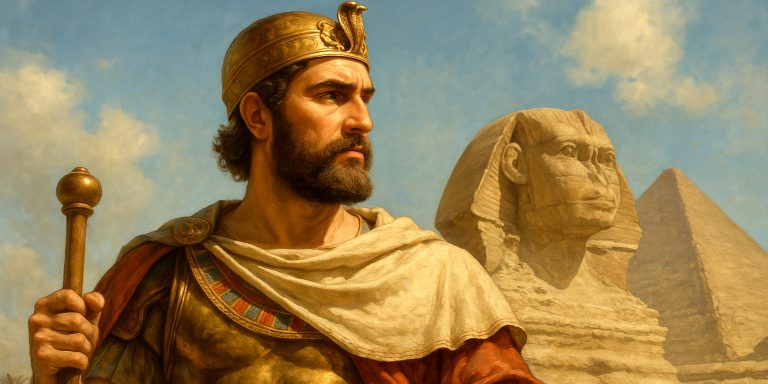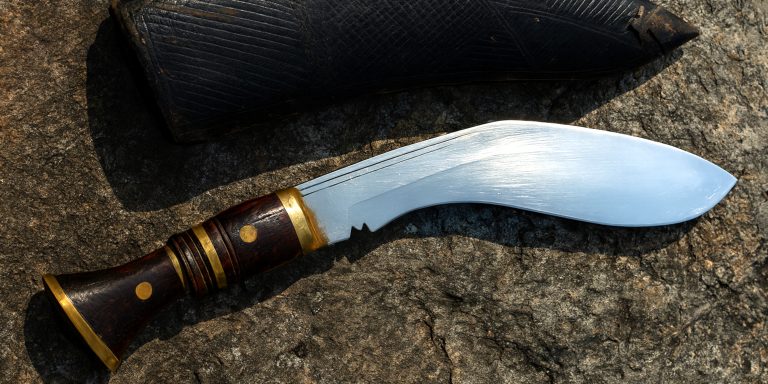
Few names in Japanese history stir as much quiet reverence among sword scholars as Amakuni Yasutsuna. Depending on which historian you ask, he’s either the semi-mythical father of the Japanese katana or a real swordsmith whose innovation shaped centuries of samurai warfare. I rather like to think he was both, an artisan whose skill became so legendary that the line between man and myth blurred completely.
The Man Behind the Myth
Amakuni Yasutsuna is often cited as the first nihontō (Japanese sword) maker to create a single-edged, curved blade. He is said to have lived during the early Nara period, around the 8th century, and worked as a court swordsmith for Emperor Shōmu.
The story goes that after watching his soldiers return from battle with broken blades, Amakuni locked himself away in his forge, determined to create a stronger weapon. Weeks later, he emerged with a new design, a single-edged, curved blade that was more resilient and better suited for mounted combat. The legend concludes with the Emperor praising Amakuni for his innovation, declaring that none of his swords had broken since.
It is a charmingly dramatic tale, and one that says a great deal about how Japanese culture venerates both craftsmanship and honour. Whether it happened exactly like that is another matter entirely.
Historical Evidence and Attribution
Sadly, hard evidence for Amakuni’s existence is as thin as the edge on his supposed swords. No surviving signed works are known, and the earliest textual mentions appear centuries later, in the Kokon Mei Zukushi Taizen and similar Edo-period compilations of sword lore.
The Amakuni school of swordsmiths, however, is very real. The lineage continued through Amakuni’s son, Amakura, and later generations of smiths in Yamato province. Some blades attributed to the school survive, displaying characteristics that would later define the tachi and eventually the katana: a graceful curvature, a robust shinogi-zukuri cross-section, and a visible hamon temper line.
In short, there’s smoke, enough to suspect there was once a fire.
Innovation and Craftsmanship
If we strip away the myth, Amakuni’s credited innovation was the creation of the curved single-edged blade, which allowed for more efficient slashing from horseback. Earlier Japanese swords, influenced by Chinese straight blades, were ill-suited to the dynamic movements of mounted samurai warfare.
This curvature improved not only the weapon’s cutting performance but also its resilience. The bending distributed impact force more evenly, reducing the chance of snapping. From a metallurgical perspective, it was a remarkably clever adaptation to both combat style and available materials.
Even if Amakuni did not invent the curve himself, he, or his school, certainly represents the dawn of the Japanese sword as we recognise it today.
Cultural and Symbolic Legacy
By the Kamakura period, centuries after Amakuni’s supposed lifetime, the katana had become not just a weapon but a spiritual symbol of the samurai class. Amakuni, as its mythical progenitor, was elevated to near-deific status in swordmaking circles.
In some Shintō shrines, he is even honoured as a patron deity of swordsmiths. That tells you how enduring his legend became. For a craftsman to be mythologised into divine memory speaks volumes about how deeply swordmaking was entwined with Japanese identity and belief.
As a historian, I find it fascinating that the Japanese chose to give their craft an origin story rooted not in conquest or divine gift, but in perseverance and human ingenuity. It is the tale of a man who saw failure and decided to do something about it, a surprisingly relatable motivation.
Amakuni and the Katana’s Evolution
The katana we know today evolved gradually from the tachi, the long, curved sword carried edge-down. The innovations credited to Amakuni, particularly the curvature and the composite forging technique, laid the groundwork for what would follow.
Later swordsmiths such as Masamune and Muramasa refined these principles, creating blades of astonishing strength and beauty. But every legend has an ancestor, and in the case of the Japanese sword, that ancestor is Amakuni Yasutsuna.
Where to See His Influence
While no confirmed Amakuni blades survive, swords attributed to his school are preserved in Japanese collections and temples. The Kogarasu Maru, sometimes called the “Little Crow,” is occasionally linked to his lineage, though that too is open to debate.
For those interested, institutions such as the Tokyo National Museum and the Kyoto National Museum exhibit early tachi and proto-katana examples, showing the gradual refinement of curvature and lamination techniques that trace back to Amakuni’s supposed innovations.
Legacy and Personal Thoughts
In the end, Amakuni Yasutsuna stands at that intriguing crossroads where craftsmanship becomes legend. Whether or not he personally forged the first curved blade, his name has come to represent the spirit of Japanese swordmaking itself, meticulous, innovative, and deeply human.
It’s easy to dismiss such stories as myth, but I rather think they serve a purpose. The tale of Amakuni is not just about steel; it’s about pride, persistence, and the endless human urge to make something better than what came before.
And if you’ve ever watched sparks fly from a hammer striking steel, you’ll understand why such a story endured for over a thousand years.



